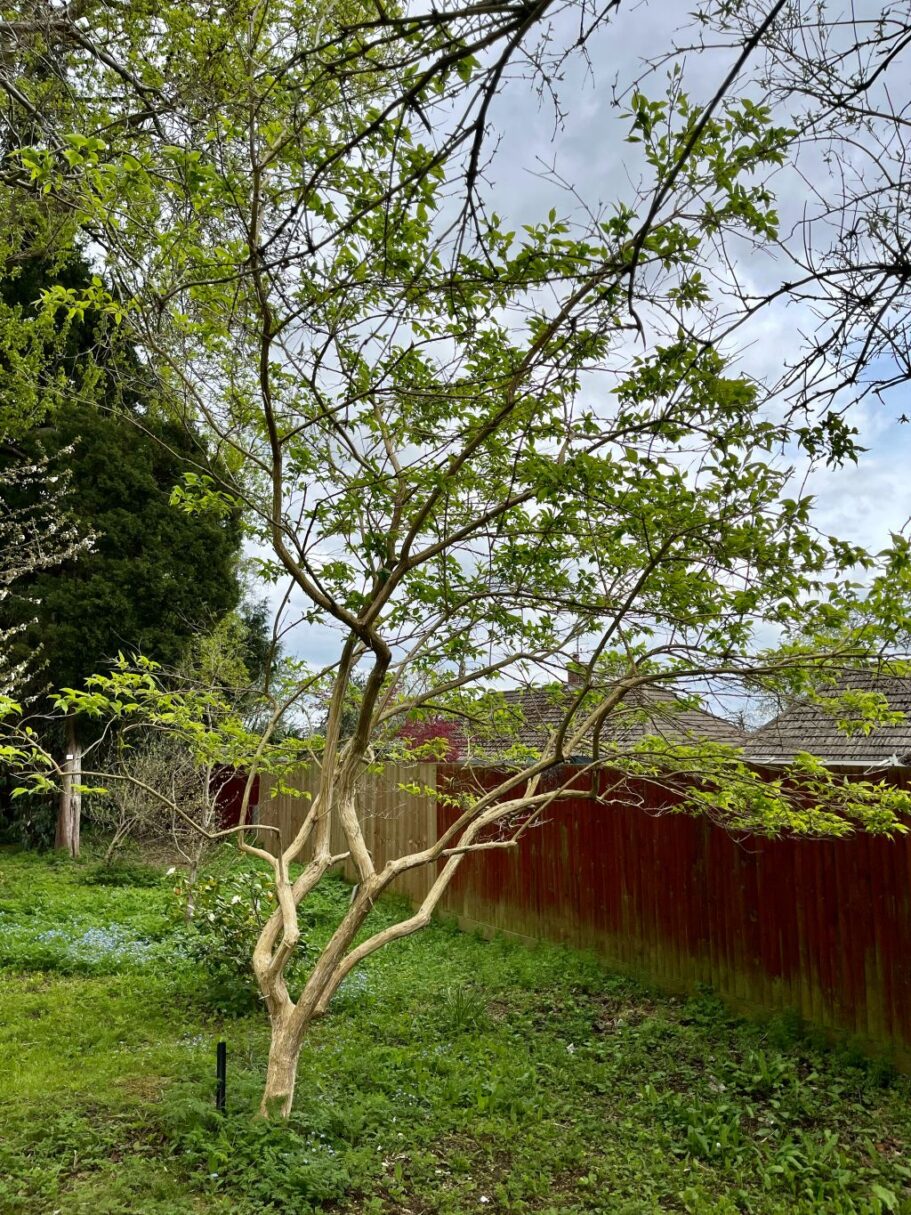#416 (M16) 7 SON FLOWER OF ZHEJIANG
Heptacodium miconioides

Planted: 2007
View On MapThis tree is in the centre of the Chinese and Japanese Section, near the Park Drive fence.
| Distribution: | Native of China, western Hubei province, where only 9 populations remain in the wild. Scrub woodlands and edge of broad leaved and evergreen forests, often on cliffs. |
| Planting Date: | 2007 supplied by Bluebell Arboretum & Nursery, Smisby, Ashby de la Zouch, Derbyshire |
| Growth Habit: | Fountain shaped, arching, multi-stemmed, deciduous shrub. Vigorous, hardy, large and upright. |
| Bark: | Blonde flaking strips peel to reveal a warm orange inner bark. |
| Leaf: | Lanceolate, pointed and toothless, conspicuously three-veined. |
| Flowers: | Small, fragrant, in whorls at the ends of shoots in late summer and autumn. |
| Fruit: | Given good weather the calyx enlarges and turns bright red Flowers mature to small rounded fruits crowned by persistent calyx. |
| Toxicity: | Ingestion may cause severe discomfort |
| Potential tree size: | 6 m x 3 m after 15 years |
| Uses: | Decorative specimen garden plant |
| Plant Hunter: | Discovered for Western horticulture in 1907 by British plant hunter Ernest Wilson on behalf of The Arnold Arboretum of Harvard University, Boston, United States. The honour of introducing seed to the west fell to members of the 1980 Sino-American Botanical Expedition. The seed they collected came from a specimen that had been transplanted from Zhejiang Province Preserve to a Botanical Garden in Hangzhou. |
| Introduction Date: | Further seed was sent in 1980/1981 to Hillier Nurseries, Romsey, Hampshire |
| Anecdotes and Comments: | It is the sole species in the monotypic genus Heptacodium, of the honeysuckle family Caprifoliaceae. The common name “seven-son flower” is a direct translation of the Standard Chinese name 七子花 qī zi huā. Related to deciduous Chinese shrub Abelia (aka Zabelia) |